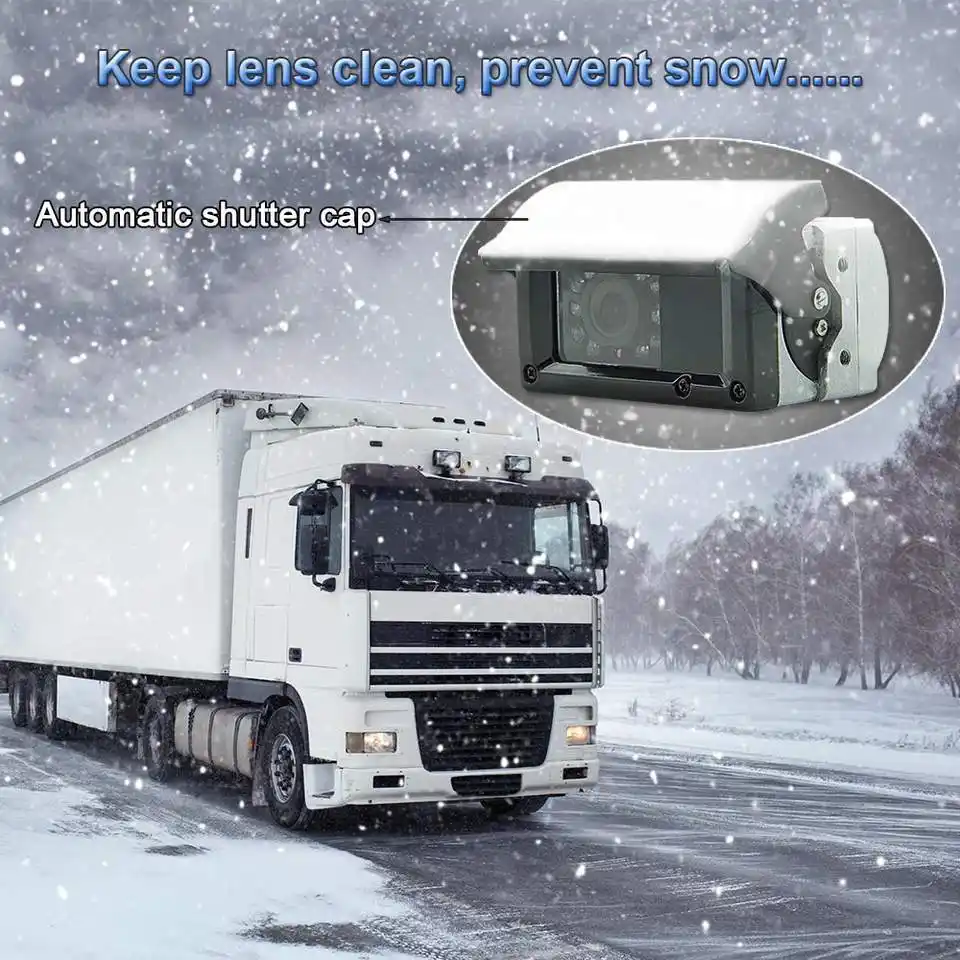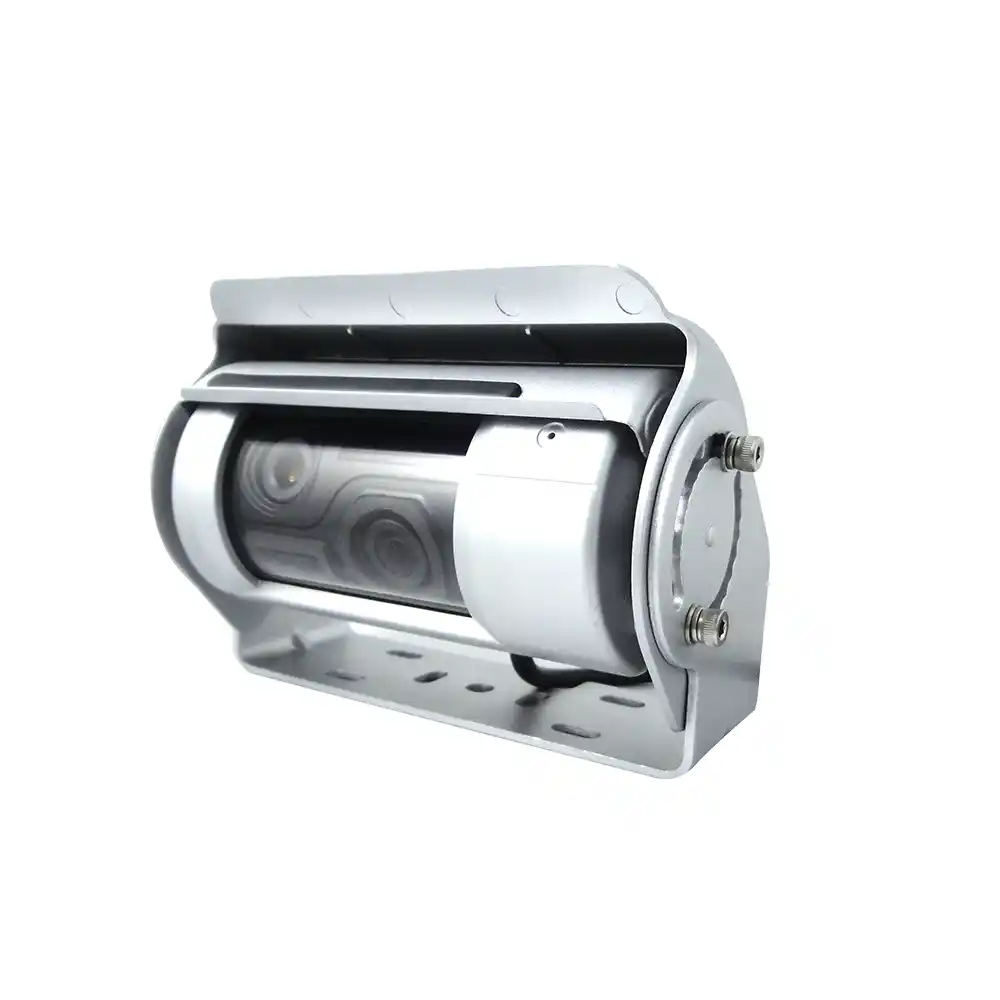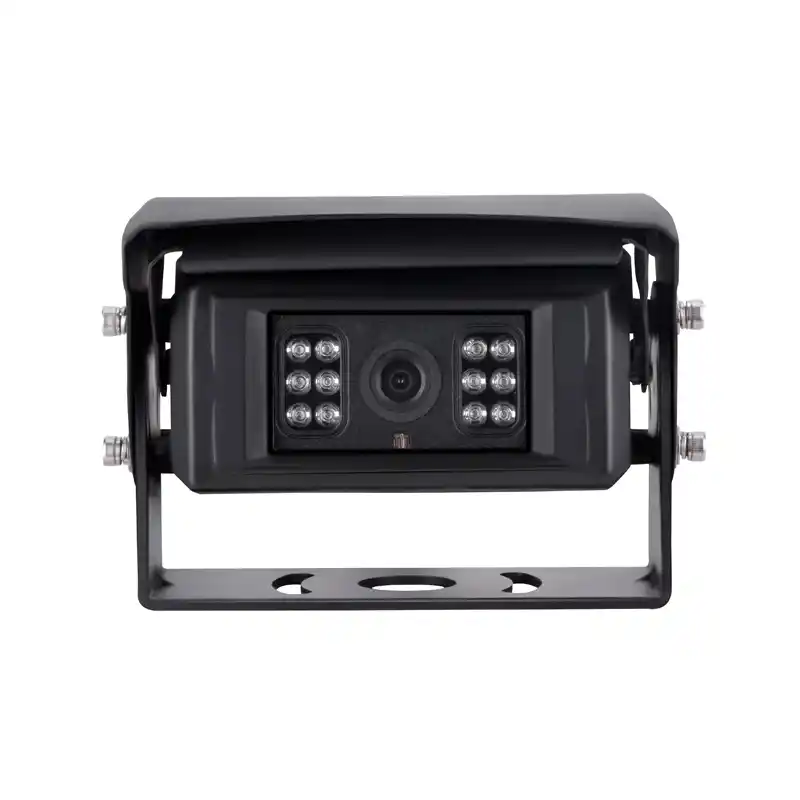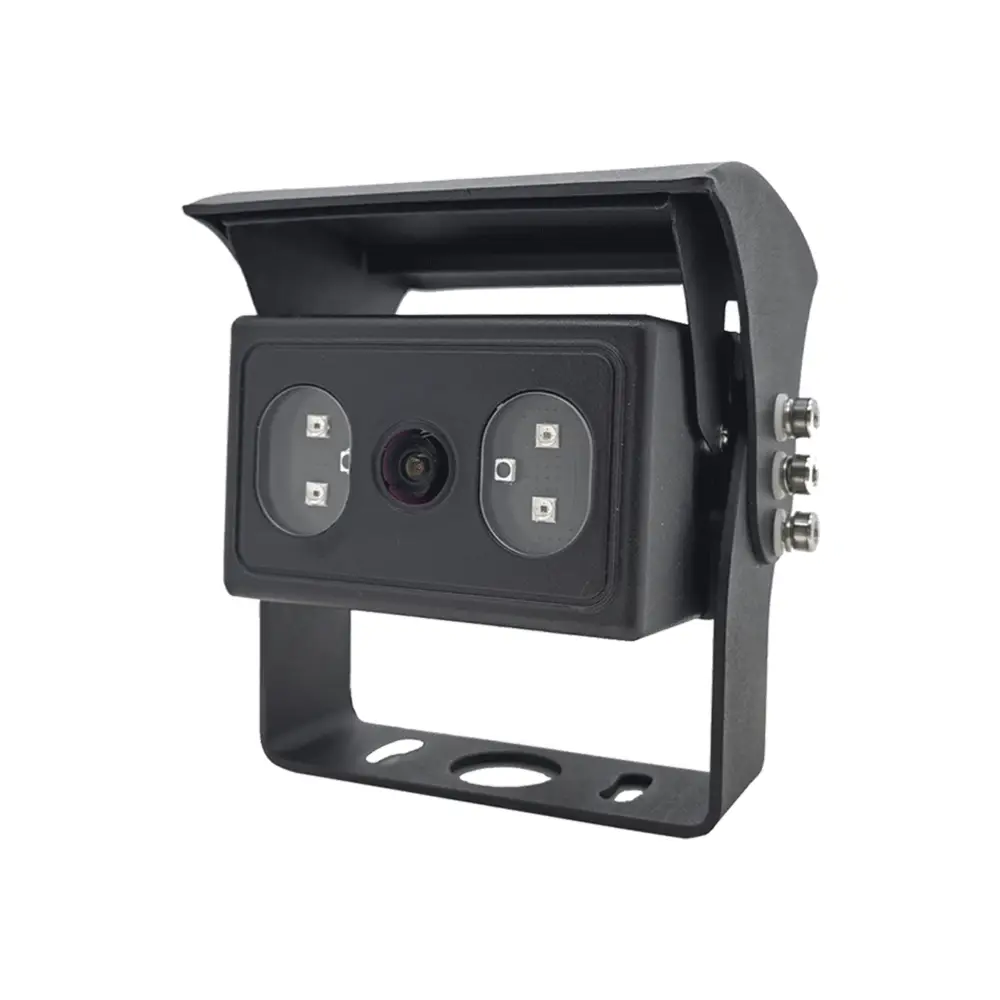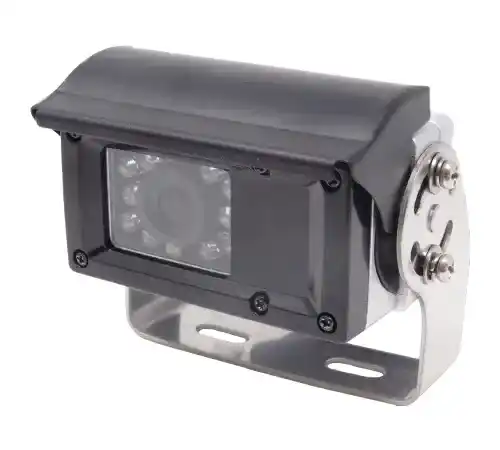Is an auto shutter backup camera necessary? The answer is yes, especially in harsh environments such as dusty, icy, or rainy conditions. The auto shutter feature is essential for protecting the lens and ensuring optimal performance. In today’s article, we’ll delve into the details of how an auto shutter camera works and why it’s a must-have for reliable visibility in challenging weather.
What’s An Auto Shutter Backup Camera?
The auto shutter backup camera also named a motorized reversing camera, the backup camera comes with an auto shutter is an advanced safety feature for vehicles designed to enhance the backup and parking experience. The key feature of this system is its auto shutter, which covers the lens when not in use. This protects the camera from dirt, dust, moisture, and other environmental elements that could compromise image quality or damage the lens. When the car is in reverse, the shutter automatically opens, allowing the camera to capture a clear and unobstructed view of the area behind the vehicle. This is especially useful in areas with high levels of dust or frequent rain.
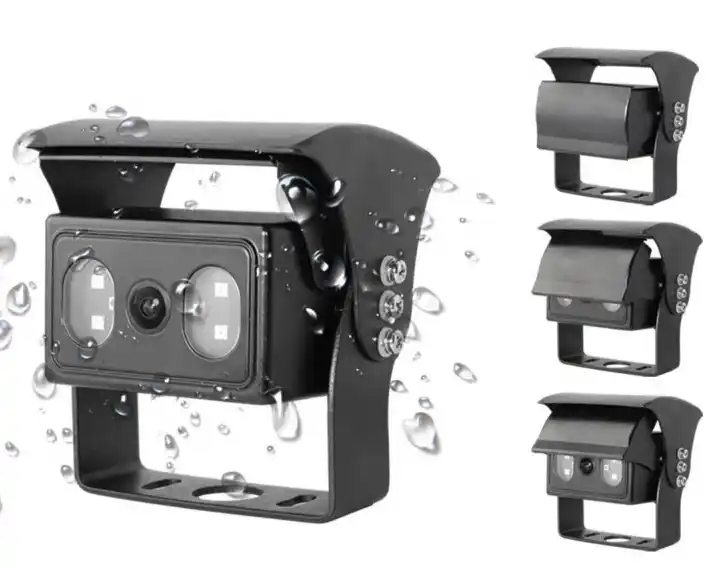
How Does the Auto Shutter Backup Camera Work?
When you shift into reverse, the shutter automatically opens, and once the reversing is complete, the cover closes on its own.
Auto Shutter Backup Cameras vs. Normal Backup Cameras
Protection vs. Exposure
An auto shutter backup camera is equipped with a built-in shutter that automatically covers the camera lens when the vehicle is not in reverse. This shutter acts as a protective cover that keeps the lens free from dust, dirt, rain, and other environmental elements that could compromise image quality. Once the vehicle is shifted into reverse, the shutter automatically opens to allow the camera to function and display the rearview.
Normal backup cameras, on the other hand, lack this automatic shutter mechanism. The lens is always exposed, leaving it vulnerable to dirt, water, and other debris. This exposure can lead to reduced image clarity over time, especially in areas with frequent rain or dust. Some normal cameras may come with basic protective covers, but they are not as efficient or automatic as the shutters found in auto shutter systems.
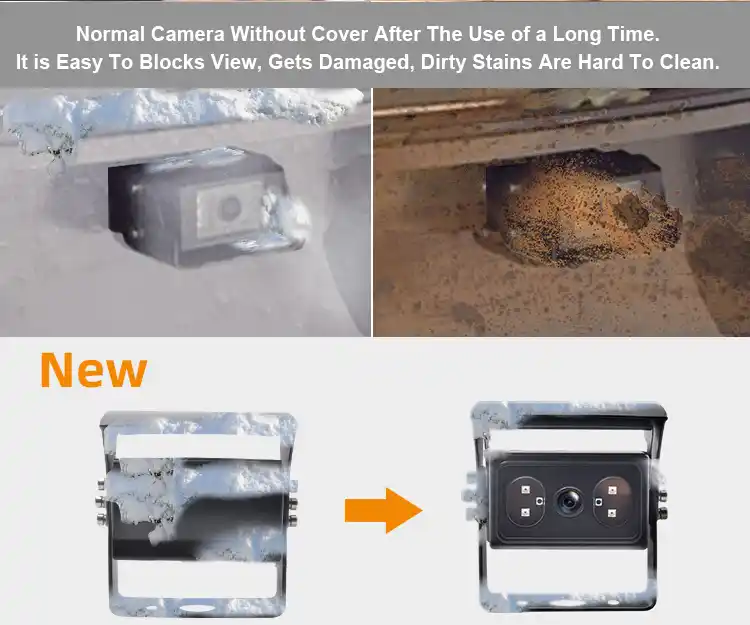
Durability and Longevity
Due to the protective shutter, auto shutter backup cameras tend to have a longer lifespan. The camera lens is shielded from external elements when not in use, reducing the chances of damage or wear. This makes them ideal for use in harsh weather conditions, such as heavy rain, snow, or dusty environments, as the lens remains clean and functional over time.
While normal backup cameras can still be durable, they are more susceptible to damage from exposure to the elements. Dust, rain, or even insects can accumulate on the lens, obstructing the view and potentially leading to a decline in image quality. In areas with harsh weather, the camera may require more frequent cleaning and maintenance, which can be inconvenient and time-consuming.
Image Quality and Clarity
The ability of auto shutter backup cameras to keep the lens clean and free of debris leads to better image quality and clearer views, especially over long-term use. The lens remains protected from contaminants, so the camera can consistently produce sharp, high-definition images, whether you’re driving in wet or dry conditions.
With a normal backup camera, the image quality may degrade more quickly if the lens becomes dirty or obstructed. While most normal backup cameras provide clear images when clean, their performance may be affected if debris or moisture obstructs the lens. In such cases, the driver may experience blurry or distorted images, which can compromise safety.
Maintenance and Cleaning
One of the biggest advantages of auto shutter backup cameras is the reduced need for maintenance. Since the lens is protected when not in use, it stays cleaner for longer periods. The automatic opening and closing of the shutter also help to keep the lens free from moisture, dirt, and snow, minimizing the need for frequent cleaning. In fact, the primary maintenance task may only involve checking that the shutter operates smoothly.
Normal backup cameras require more hands-on maintenance. Since the lens is always exposed, it needs to be cleaned regularly to prevent dirt, dust, or rainwater from obstructing the view. In some cases, users may need to clean the camera lens before every use, especially if they frequently drive in areas with poor weather conditions. The need for regular upkeep can be a drawback for those who prefer a more hassle-free experience.
Cost and Affordability
Auto shutter backup cameras are typically more expensive than normal cameras. The added mechanism of the automatic shutter, along with additional features such as higher image resolution and enhanced weather resistance, contribute to the higher price point. These cameras are generally seen as a premium option for those who want long-term durability and minimal maintenance.
Normal backup cameras are generally more affordable and are available at a wide range of prices, making them accessible to broader drivers. These cameras are a good option for those who don’t mind cleaning the lens or don’t drive in extreme weather conditions. However, the lower price tag often means fewer advanced features compared to auto shutter systems, such as enhanced weatherproofing or automatic lens protection.
Recommended Well-known Auto Shutter Cameras
There are many high-performing auto shutter cameras available, and here are four top-selling models that have received five-star reviews.
Considerations When Buying an Auto Shutter Camera
Camera Resolution and Image Quality
One of the most important aspects to consider when purchasing an auto shutter camera is the resolution. A higher-resolution camera will provide clearer, more detailed images, which is especially crucial when you're backing up in tight spaces or at night. Look for cameras that offer at least 720p HD resolution, though 1080p or higher is ideal for the sharpest images. The quality of the camera’s image processing is also vital for producing accurate colors and sharp contrast.
Field of View
The field of view (FoV) determines how wide the camera's lens captures the rear area. A wider field of view allows you to see more of your surroundings, reducing blind spots and making parking and reversing safer. Look for cameras with a wide viewing angle, typically between 120° and 170°. Keep in mind that a wider angle may lead to some image distortion at the edges, so it's essential to balance the FoV with image quality.
Night Vision and Low Light Performance
If you often drive at night or in low-light conditions, choosing a camera with good night vision capabilities is crucial. Many auto shutter cameras come with infrared (IR) sensors or enhanced low-light technology that improves visibility when it's dark. Check the camera's specifications for its ability to handle low-light conditions and ensure it can produce clear, usable images at night.
Shutter Mechanism and Reliability
Since the auto shutter camera’s primary feature is the automatic shutter, it’s essential to ensure that the shutter mechanism is reliable. The shutter should open and close smoothly without delay or malfunction. Look for models with a well-engineered shutter system that works seamlessly every time the vehicle shifts into reverse.
Maintenance and Care for Auto Shutter Backup Cameras
To ensure optimal performance and longevity of your auto shutter backup camera, regular maintenance is crucial. First and foremost, the lens should be kept clean. Since the shutter protects it when not in use, dirt and debris can accumulate over time, especially if the camera is used in dusty or muddy environments. Use a microfiber cloth or lens cleaning solution to wipe the lens gently. Additionally, it’s important to check the auto shutter mechanism periodically to ensure it’s operating smoothly. If the shutter becomes stuck or slow to open, this could affect the camera’s performance. Also, if you live in areas with harsh weather conditions (extreme heat, cold, or heavy rain), it’s advisable to inspect the camera and shutter regularly for signs of wear or damage.
Common Issues and Troubleshooting
Despite being relatively durable, auto shutter backup cameras may encounter issues over time. Here are some common problems and solutions:
Shutter Not Opening/Closing Properly
If the shutter does not open or close as expected, check for any obstructions or dirt on the shutter mechanism. Cleaning and lubrication may help resolve the issue. If this doesn’t work, the mechanism might need professional servicing.
Blurry Image
A blurry image could be caused by dirt or moisture on the lens. Regularly cleaning the lens can help solve this issue. If the problem persists, check the camera’s settings or calibration to ensure proper focus.
No Image Displayed
If the camera is not transmitting an image to the display, check the wiring and connections between the camera and the car's electrical system. Ensure the camera is receiving power and that the display unit is set to the correct input source.
Intermittent Connection Issues
If the camera’s feed drops in and out, it may be due to a poor connection, either in the wiring or at the connector. Recheck all connections and ensure they are securely fastened.
Application of the Auto Shutter Camera
Applicable Vehicles: Tractors, Engineering Vehicles, Excavators, Harvesters
Auto shutter cameras are widely used in heavy-duty vehicles such as tractors, engineering vehicles, excavators, and harvesters to enhance visibility and safety in challenging work environments. These vehicles often operate in areas with limited visibility, such as construction sites, agricultural fields, and muddy terrains. The auto shutter camera helps improve rearview visibility by automatically protecting the lens from dirt, debris, or mud. It ensures operators can safely maneuver and reverse without worrying about obstructions or visibility issues, making it an invaluable tool for precision and safety in heavy-duty operations.
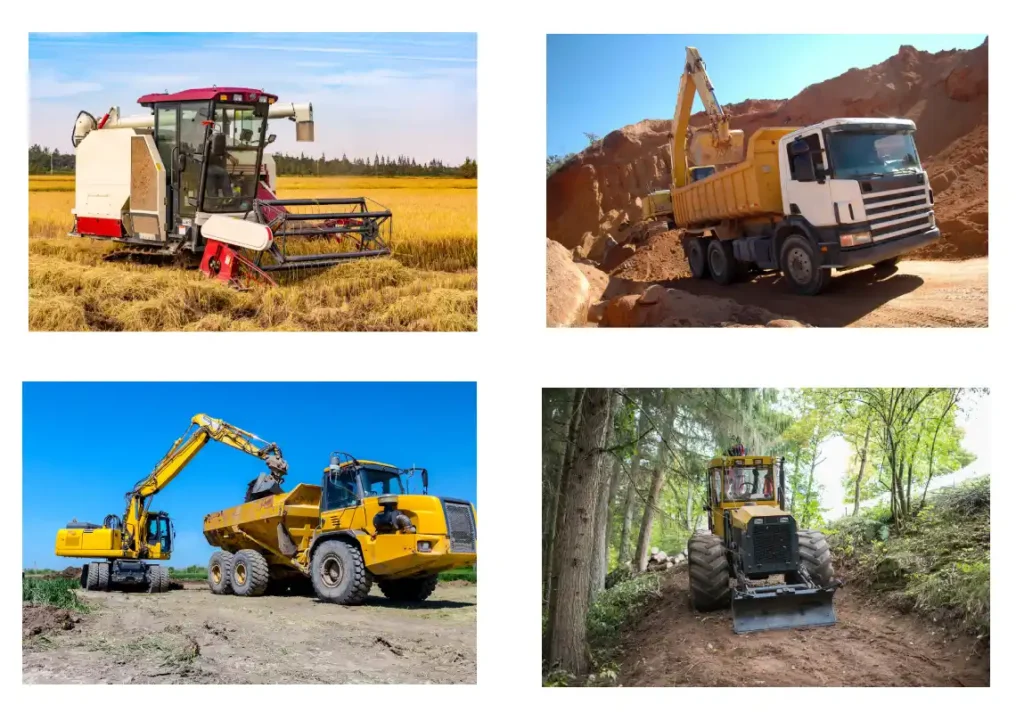
Weather Conditions: So Cold and Easy to Get Icy, Heavy Rainy Days
Auto shutter cameras are specifically designed to perform well in extreme weather conditions such as cold, icy environments and heavy rainy days. The automatic shutter protects the camera lens from accumulating ice, snow, or rain, ensuring clear visibility even in freezing temperatures or during downpours. This is particularly beneficial for vehicles operating outdoors in winter months, such as tractors, harvesters, or engineering vehicles, where traditional backup cameras may struggle due to ice buildup or water obstructing the lens.
Conclusion
Do your vehicles operate in harsh environments? If so, what are you waiting for? It's time to install an auto shutter camera to protect your lens and enhance your safety. VST is a professional manufacturer of vehicle safety solutions. If you have any doubts, let our experienced experts help you now!

